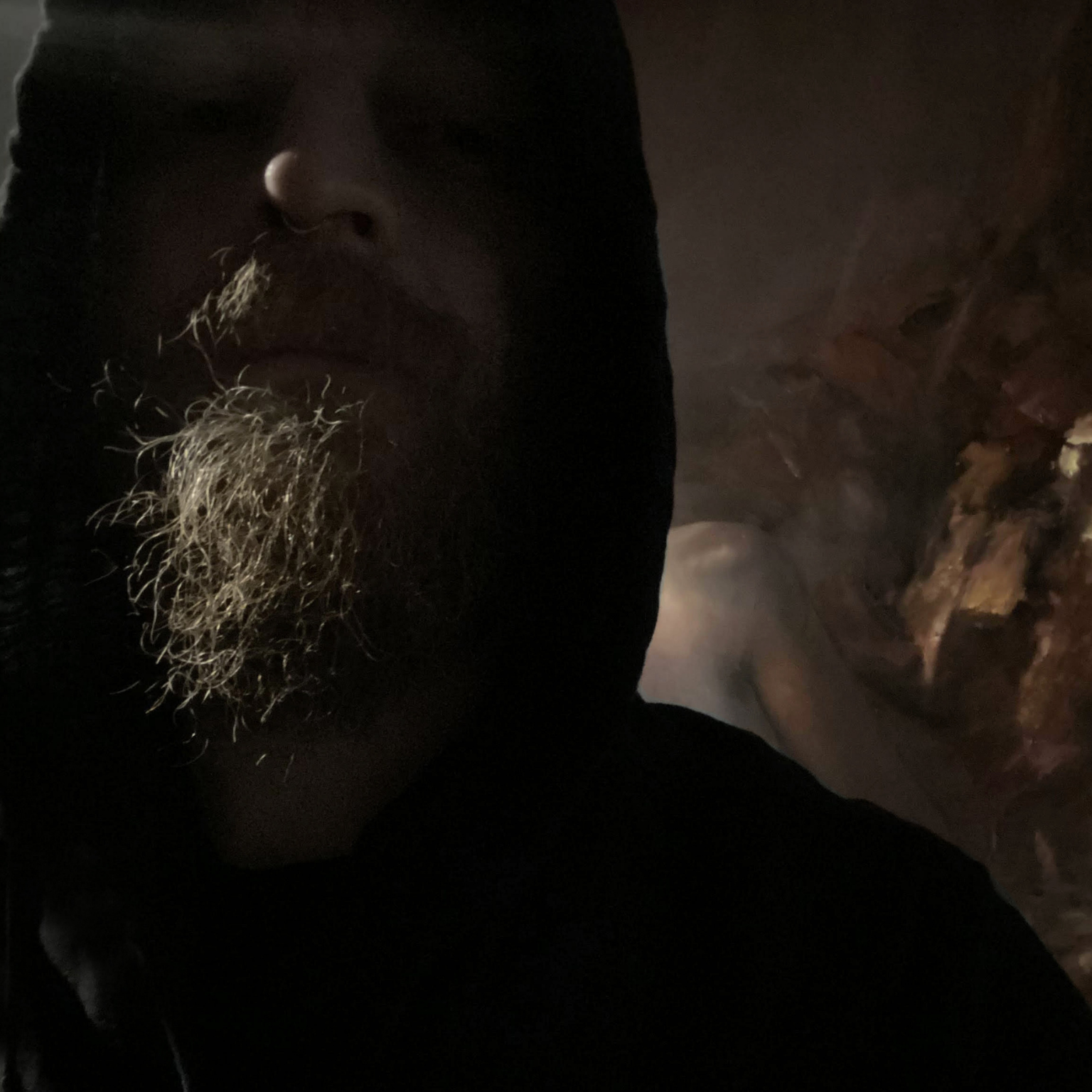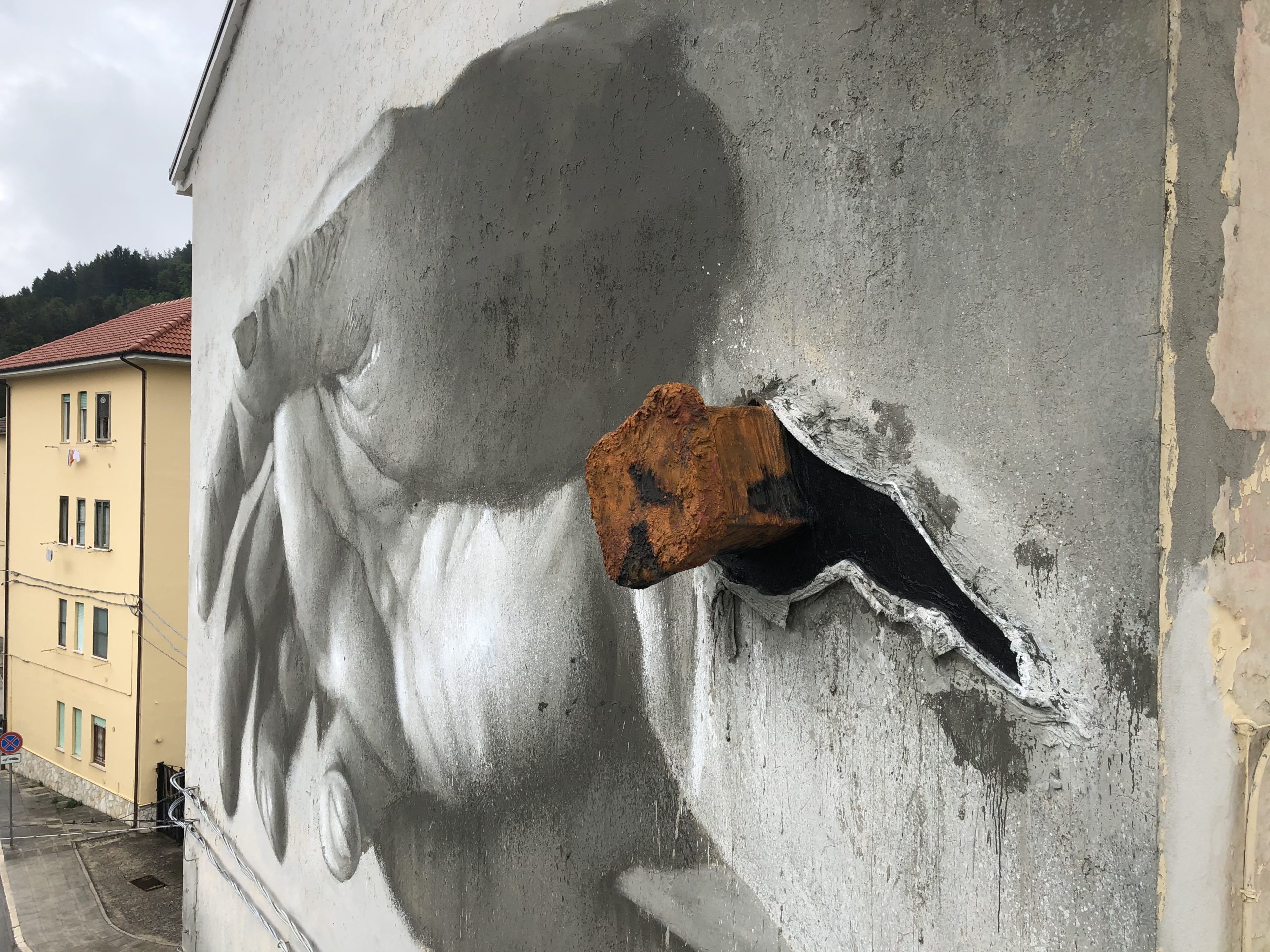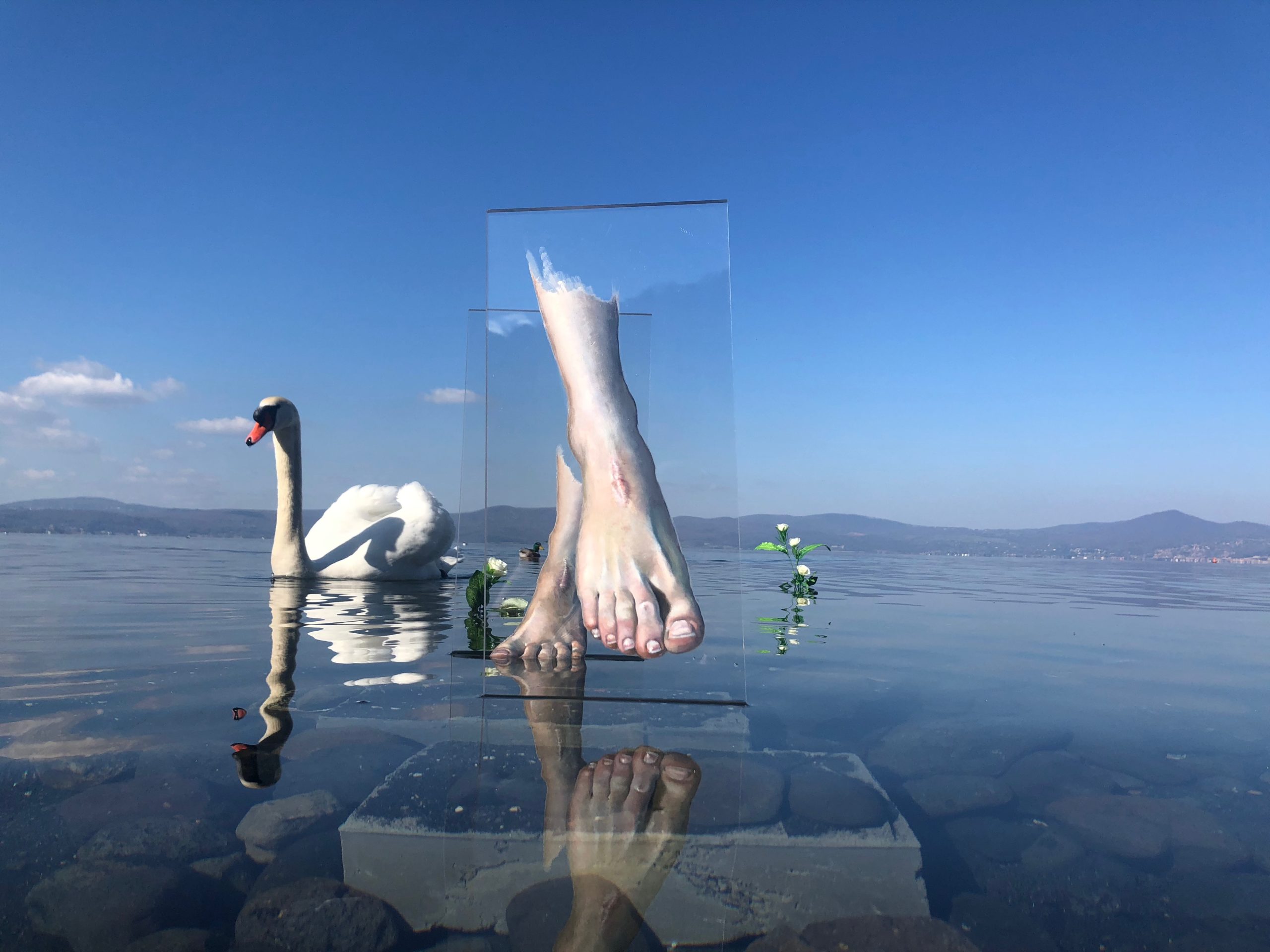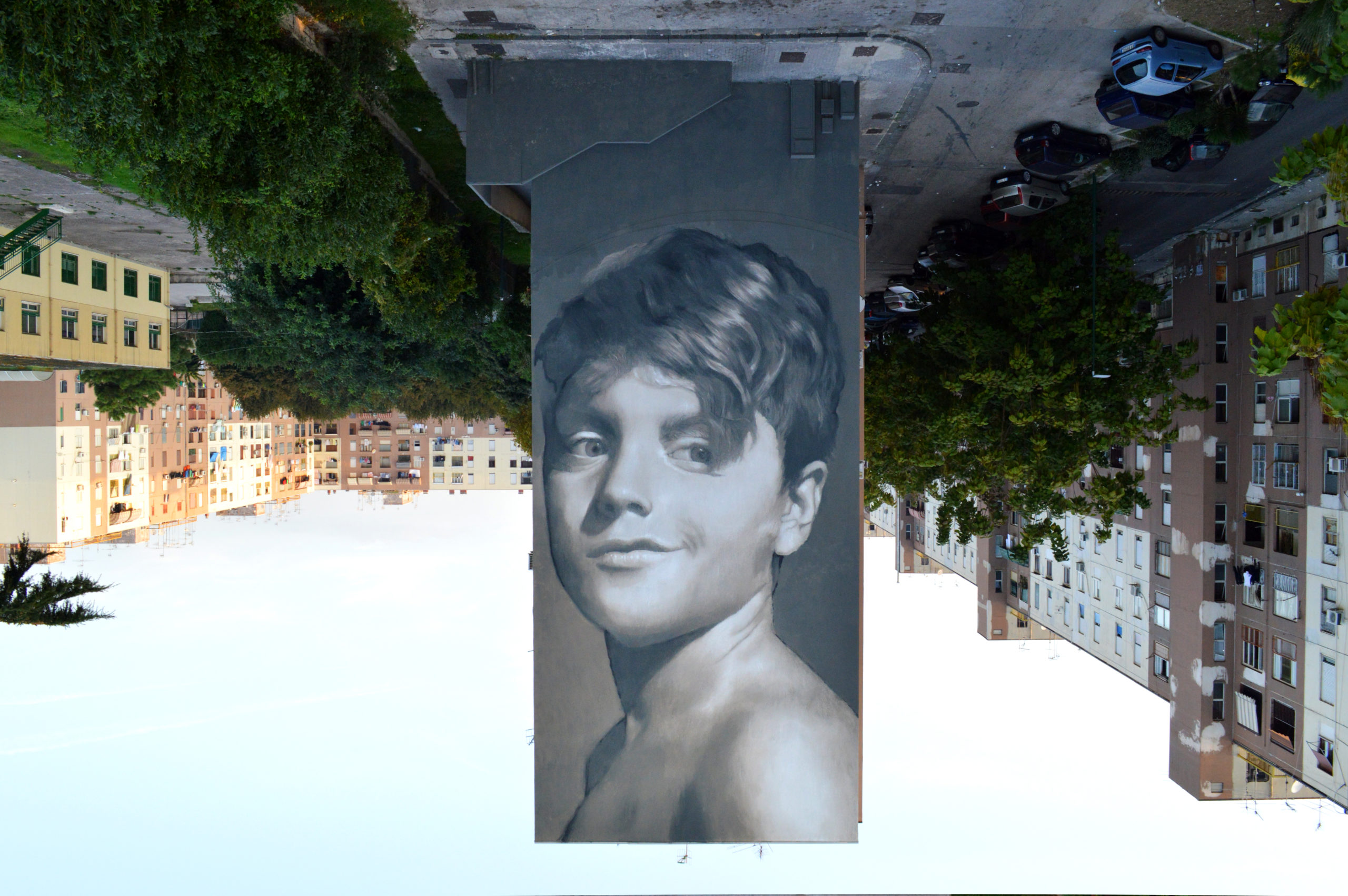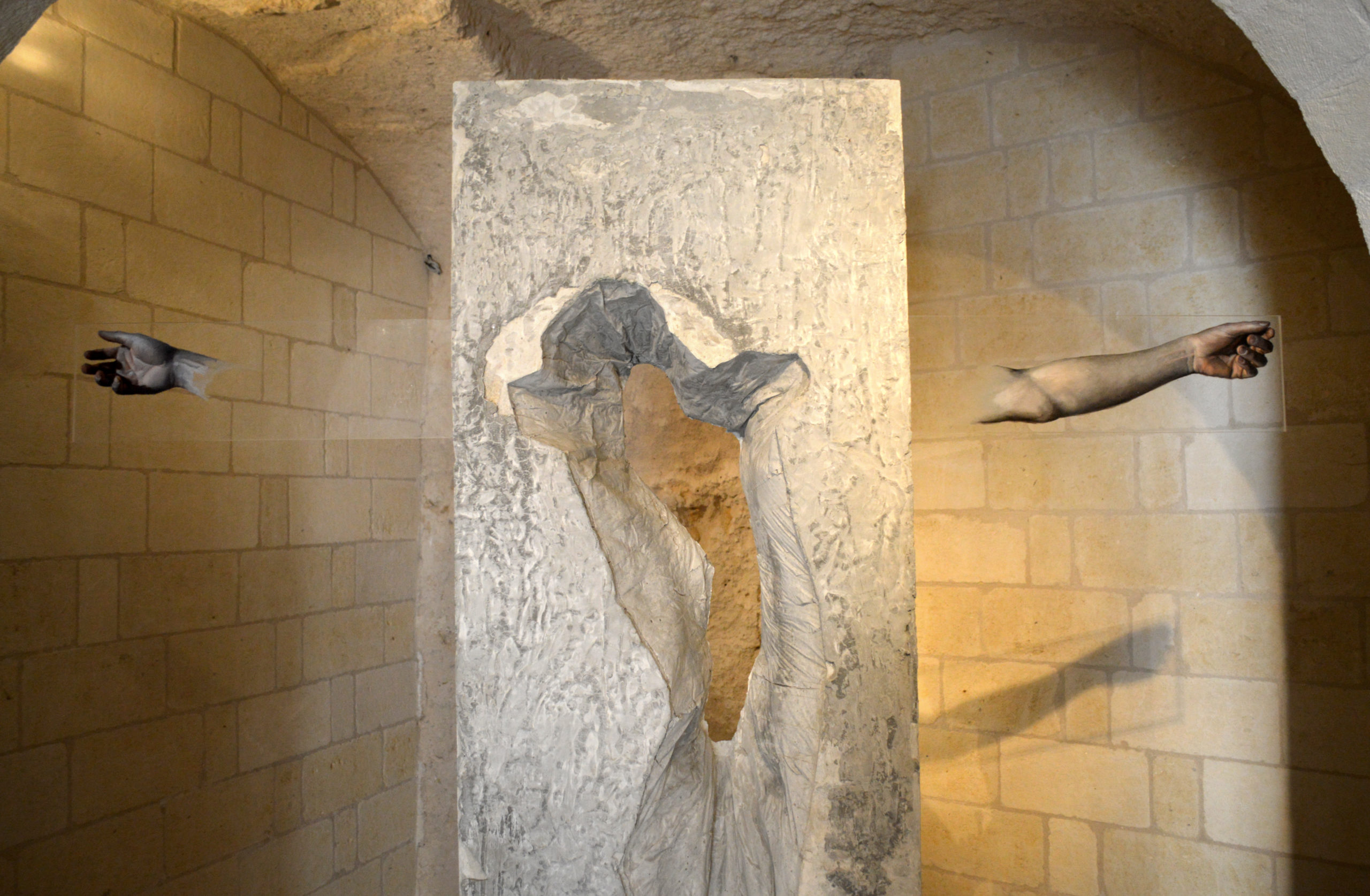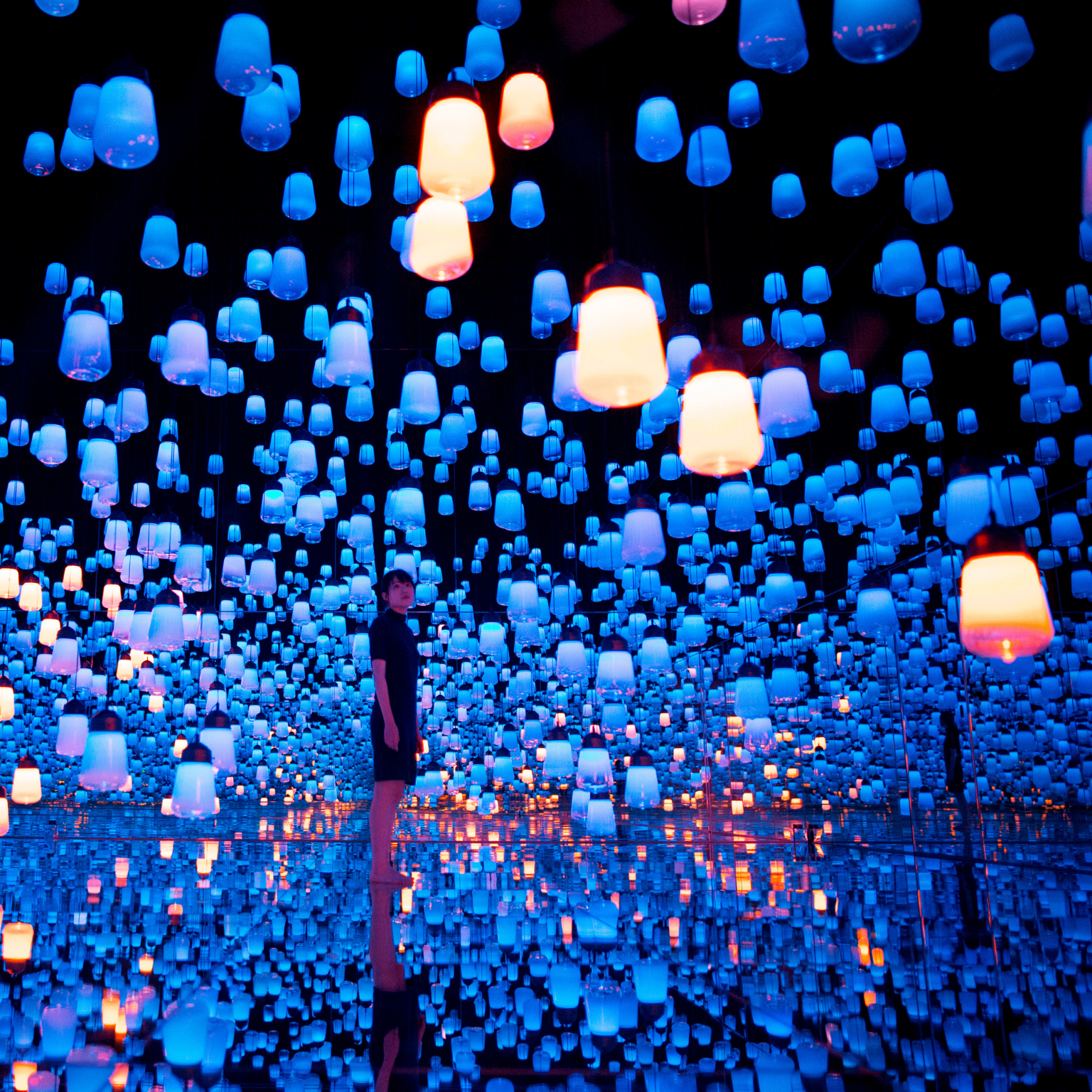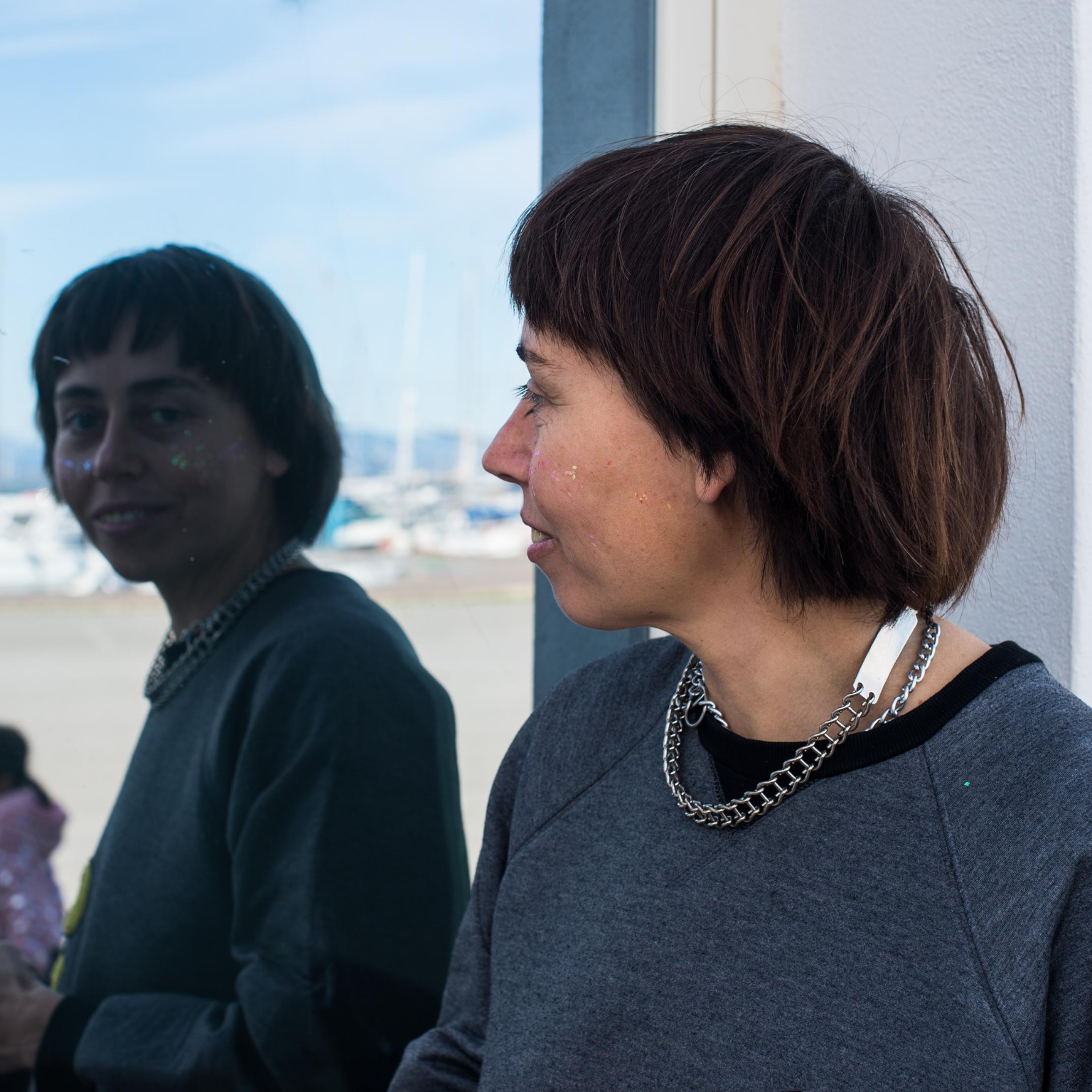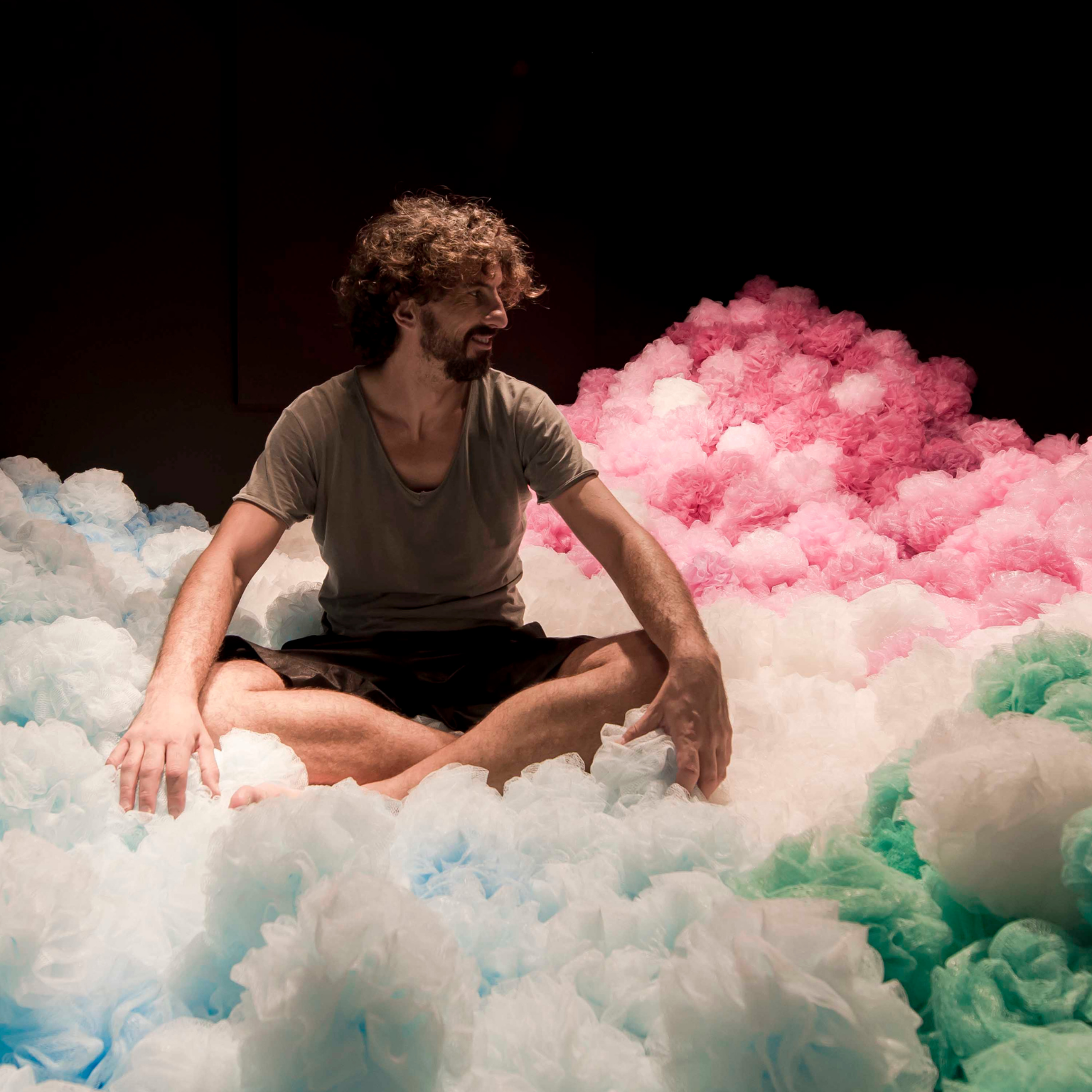Luis Gomez de Teran, painter from Caracas, Venezuela. Photo © L. G. de Teran
1.Tell us what you do and your beginnings.
I find it very hard to label myself, I should say I’m an artist, but it’s not my favourite word to introduce myself. I’m mostly a painter, working both in the public area and for galleries, museums and private projects, but in the last few years I’m also approaching installations and some sculpting techniques to overcome the flatness of pictorial language.
What I actually do is create images in order to tell stories, which stand in an undefined position between personal experiences, thoughts or emotions, and things that happen around me that are beyond my control. In my life I’ve often found myself surrounded by pretty extreme people and situations, and even if nowadays I slowed down, that environment is still a big source of inspiration for stories that I consider important to be told.

I try to be as honest as I can in my work, and one of its most recurrent features is the presence of an amount of sufference, my artworks often refelct the way I face it, the way I try to accept its unavoidabilty, and how to heal from it or at least live with it. All the forms of art that touch me deeply always feature moments of pain, and through art I understood that it’s okay not to feel okay all the time.
I approached art with painting graffiti as a kid, I started when I was like 13 and occasionally I still do. At that time it was a rebellious and totally anti-fashion movement, involving a lot of illegal freedom, irresponsible actions and weird and dodgy people. Right now things changed so much, the “street art” movement has been institutionalized, I’m aware to be an accomplice for this crime, and “street artists” have mostly been tamed. Even though I really respect and admire a few talented artists, I struggle to feel like a part of the movement.
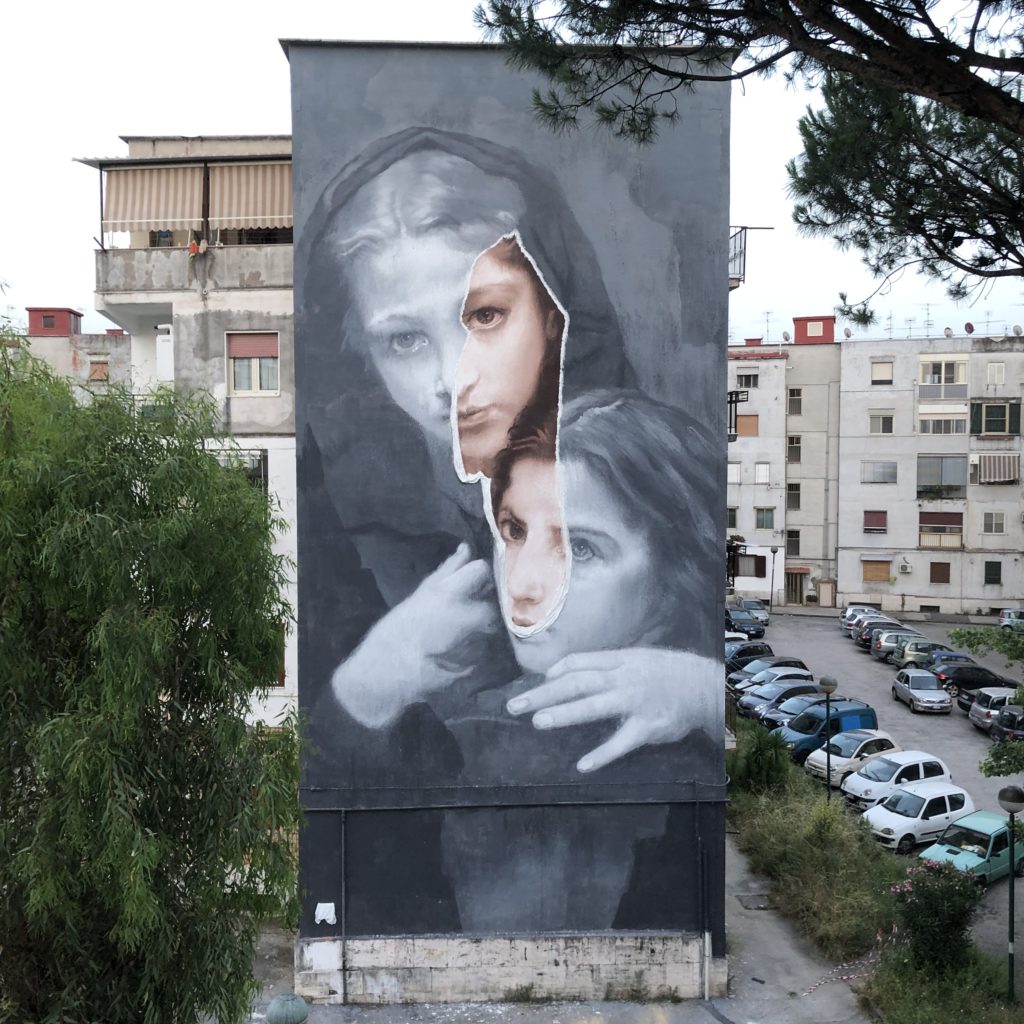
Graffiti have been my primary art school, then I proceeded on my educational path by myself, I started reading, to educate my mind and studying art techniques, to educate my hand. I practiced figurative oil painting on canvases and eventually took that language back to walls and big surfaces. Lately I started experimenting new supports like plexiglas and wood and different materials, like concrete, resins and foams, connecting paintings to matter and scuplting, breaking the bidimensional barrier of the painting support.
2.What are your favorite museums in the world? Why?
A list would be too long, so I’ll answer just with my favourite one, the Galleria Borghese, in the beautiful nature of Villa Borghese in Rome. The artistic standard of the artworks inside the museum gets the viewers to stand in awe in front of Bernini’s marble sculptures of rapes and abductions or Caravaggio’s splendid paintings of beheadings.
There’s a mental short circuit happening in that place, where such beauty destroys daily standard concepts of good and evil to the point of making the viewers look at death and sufference without fear, but with the awareness of contemplating moments of real life, this process fits perfectly my idea of art.
3.How important are social networks in your business? And which platform do you prefer and why.
I’m in a complicated relationship with social networks. As an artist and as a user I understand their importance in sharing informations and creating worldwide connections and opportunities, but at the same time I see them as a dangerous way to show yourself and a way to inflate egos through parameters that I usually don’t recognize as valid. I think there’s a widespread taste for trivial, superficial and predictable contents on social medias, and this happens in the artistic section as well.
Some of my own favourite artworks are among the ones that received fewer interactions on social medias and it took me time to learn not to care about it, but the risk for an artist is to end up, even subliminally, to indulge the judgements of this invisible crowd of hasty viewers, modifying or changing one’s artistic research in order to please them, which is horribly wrong to me. At the same time a part of me keeps being gratified when my artworks are appreciated, and I’m very disappointed with myself for this.
Anyway, the one I use more is Instagram, as it’s more quiet, all the noisy opinions on Facebook are so frustrating that i gave up its professional use long ago.
4.What are your future projects?
We’re facing a period of uncertainty, mankind discovered itself way weaker than it thought, the godlike reflection in the mirror revealed itself as faux. It’s the dawn of a new age and this can be a source for a bipolar thought process, I will work on this vulnerability, healing it one day and hurting it the next.
5.To create greater engagement among museums, artists and professionals, do you have any advice for cultural projects such as #MuseumWeek?
This is a hard question as it’s out of my sphere of competence. One thing that I often notice is that there’s a lot of hurry in the art world, artists have to produce artworks like chickens have to produce eggs, and this leads to a lot of repetetive and predictable art, at the same time viewers skip from an artwork to the next one in five seconds, like zapping tv channels.
Many things are huge in the morning and forgotten by the evening. I really appreciate the slowness of the process, maybe my only advice is to take the time to create and promote, something that will be able to stand the test of time.
Interview by Fabio Pariante, journalist
MORE
Luis Gomez de Teran on social networks: Instagram
Luis Gomez de Teran (Caracas, 1980) aka Gomez is a Venezuelan urban art painter very active especially in Europe: Rome, Berlin, Napoli, Paris and Barcelona are just some cities where the artist has left his signature on the street or in art exhibitions.
Gomez’s paintings are Caravaggesque, they are baroque in colors, in the search for light and in forms; his artistic production is based on different supports such as mirrors, iron and walls, and above all it is based on the exploration of the human body, of its details, often with references to Greek and Christian mythology.
In each work there emerges a sense of hope and strength that belongs to the human being, between good and evil, between beauty and decay, between freedom and slavery. Luis Gomez de Teran lives and works in Rome.
